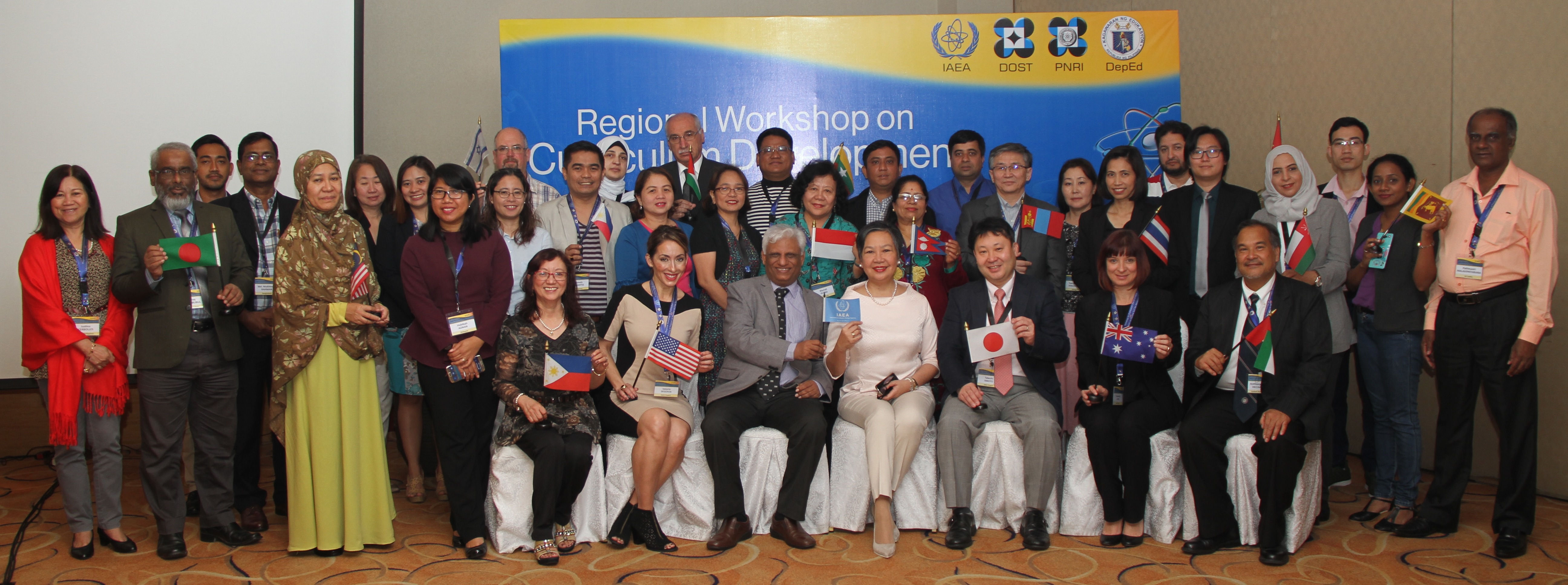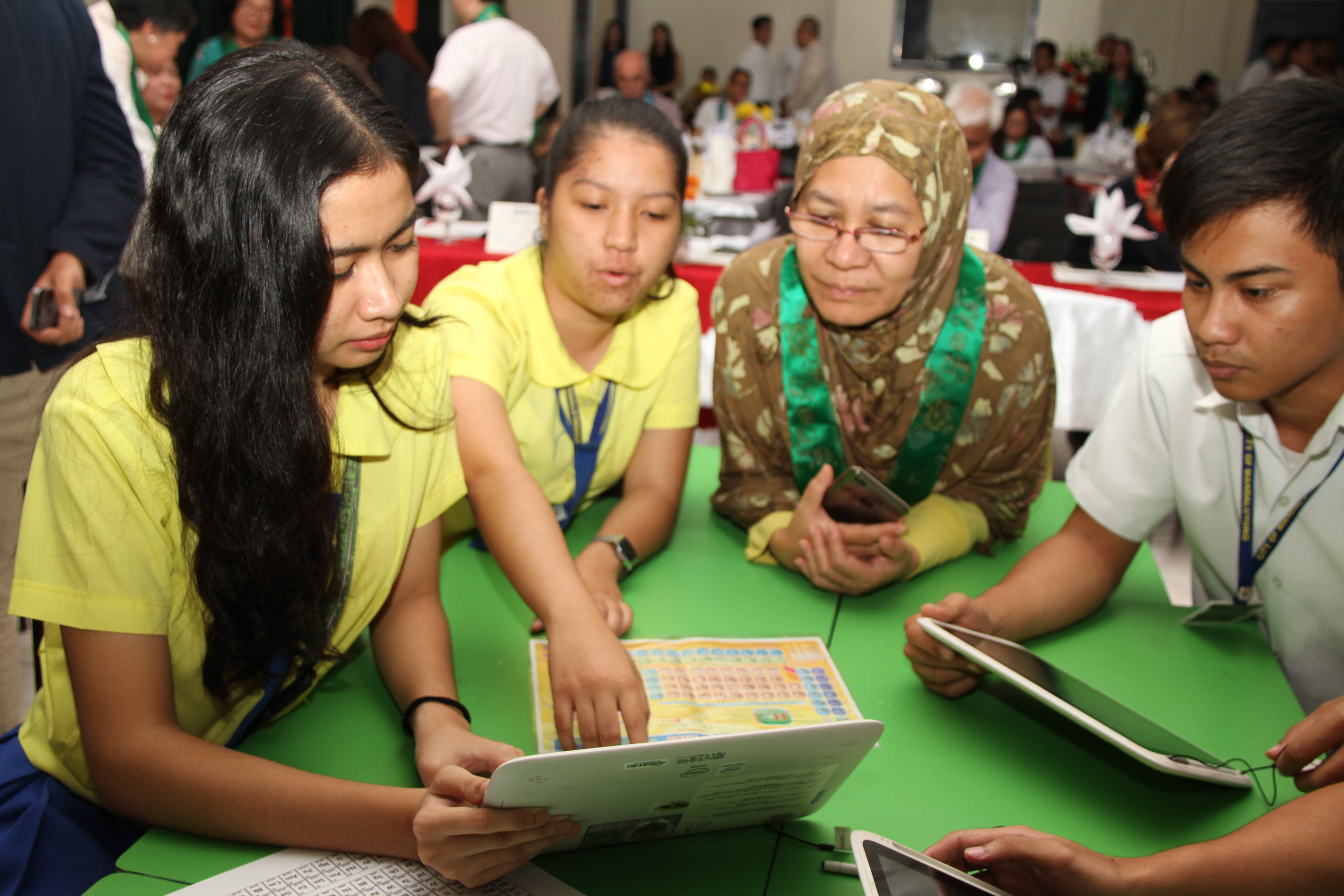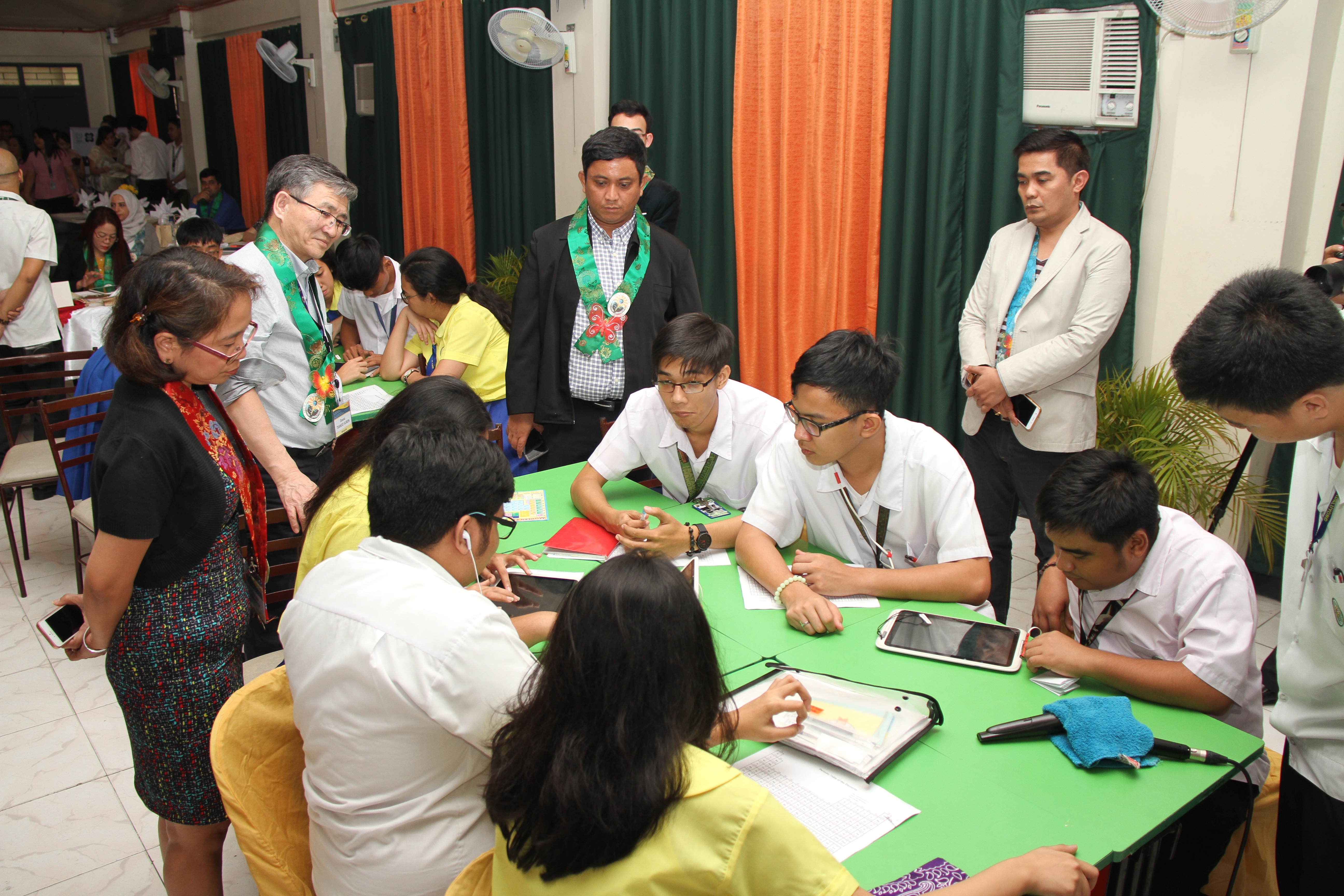
IAEA officials and experts with leading educators, communicators and government representatives from 23 IAEA Member States during the Regional Workshop on Curriculum Development and Launching of Nuclear Science and Technology for Secondary Schools held in the Philippines


Workshop participants observe as students were taught nuclear reactions in a chemistry class conducted in the Philippines during the IAEA Regional Workshop on Curriculum Development and Launching of Nuclear Science and Technology for Secondary Schools
IAEA Reaches out to Secondary Schools in the Asia-Pacific Region
Dwindling numbers of young students across Asia and the Pacific region are taking up science-related fields, particularly during their crucial years in secondary schools. More than a problem in each Member State’s educational system, it also jeopardizes the future of scientific and technical manpower, especially with the increasing contribution of nuclear-related applications for developing economies and industries.
Fortunately, leading educators, communicators and ministry officials in the Asia-Pacific region are starting the year right by making new commitments to bring secondary students back on track in the sciences through the International Atomic Energy Agency (IAEA) Regional Workshop on Curriculum Development and Launching of Nuclear Science and Technology for Secondary Schools from February 5 to 9, 2018 in the Philippines.
Spearheading the program as the designated lead country, the Philippines hosted the five-day event under the IAEA Technical Cooperation Project RAS 0079 on “Educating Secondary Students and Science Teachers on Nuclear Science and Technology” with more than 40 participants from 23 Member States.
IAEA experts from Australia, Japan and the United States of America shared their experiences and strategies to assist the Member States who have yet to include nuclear science in their education programs, as well as to sustain the progress of countries which are already in the process of integration in their respective curriculums.
The workshop aims to launch the regional program and organize the regional team in participating IAEA Member States for developing strategies that will help increase the interest of students in the region regarding science and technology in general, eventually leading to future careers in Science, Technology, Engineering and Mathematics (STEM).
In particular, the program will also help to provide a more accurate perspective of nuclear science among secondary school students and a better understanding of nuclear and radiation applications in their daily lives.
“Collectively we can seek to raise a new generation of young people who are much more informed of the facts surrounding nuclear science and technology and understand the important outcomes and benefits it helps to deliver in the key areas of human health, sustainability and driving innovation for our industries,” said Ms. Cassandra Casey, who handles communications and community relations at the Australian Nuclear Science and Technology Organisation (ANSTO) who served as one of the experts for the workshop.
As part of the program, several IAEA officials, including Director General Yukiya Amano himself, witnessed the signing of a Memorandum of Understanding between the Philippines’ Department of Education and the Department of Science and Technology - Philippine Nuclear Research Institute for implementing the project on a national level.
Planned to be implemented for five years, from 2018 to 2022, the activities for the IAEA project include the training of secondary science teachers and students on nuclear S&T through scientific visits, hosting of expert missions and the conduct of national seminars and workshops. Educational and learning resource materials on nuclear science will also be developed in various formats.
The development of these activities and materials build upon the previous success of an earlier IAEA outreach project, RAS0065 on “Supporting Sustainability and Networking of National Nuclear Institutions in Asia and the Pacific Region” which was pilot-tested by Indonesia, Malaysia, the Philippines and the United Arab Emirates from 2015 to 2017.
A key component of the project is the adoption of activities under the activities from a list of the IAEA-developed Compendium of Resources and Activities on Nuclear Science and Technology for Secondary School Teachers and Students.
“Over the years, through the contributions of fellow experts leading this project, we are now seeing the superb efforts of the Member States who have taken global best practices of the Compendium and have applied them to their local curriculums and local needs,” said Dr. Valerie Segovia of the Nuclear Power Institute in Texas, USA, who joined in both the development of the Compendium as well as in seeing these ideas in action during the pilot project.
Experts from the IAEA trained science teachers on the use of interactive experiments, novel tools and high-tech instruments such as cloud chamber kits and radiation survey meters to reignite the interest of young students in nuclear science.
Among these experts is Dr. Takeshi Iimoto, a Japanese radiation protection expert and professor from the University of Tokyo, who helped develop the classroom-scale experiments. During his visits to the pilot schools and interaction with many of the students, he was impressed with how all pilot countries adapted the IAEA Compendium activities from its original Japanese context into a form which evolved to suit the needs of different cultures.
“I am proud that Japanese knowledge and experiences accumulated over a long period of time, and tools developed in Japan are effectively used in their activities,” said Dr. Iimoto.
With the new project well underway, the IAEA is poised to provide more technical and financial assistance towards nuclear science education, not only in the Philippines, but throughout the Asia-Pacific region.












































